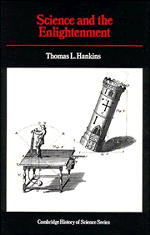V - Natural History and Physiology
Published online by Cambridge University Press: 05 February 2015
Summary
This chapter is about the world of living things. It could be called a chapter on biology, except for the fact that biology, as a word and as a discipline, did not appear until the very end of the eighteenth century. To see the world the way the men and women of the Enlightment saw it, we have to see it through the eyes of natural history. “Natural history” means an inquiry or investigation into nature; and “nature,” in the Aristotelian sense, means that part of the physical world that is formed and that functions without the artifice of man. A growing tree and a falling rock are both part of “nature” because they move and grow without human direction. Natural history, then, covers the entire range of observable forms from minerals to man, excluding only those objects crafted by human hands and intelligence. Its method is descriptive, and its scope is encyclopedic. Francis Bacon called it the “great root and mother” of all the sciences and made it the indispensable prelude to his experimental philosophy.
In spite of its enormous scope, natural history did not treat all questions about living things. The purpose of natural history was to describe and classify the forms of nature; it did not include a search for causes. Both plant and animal physiology — that is, the investigation of plant and animal functions as opposed to their forms — were still part of physics.
- Type
- Chapter
- Information
- Science and the Enlightenment , pp. 113 - 157Publisher: Cambridge University PressPrint publication year: 1985



